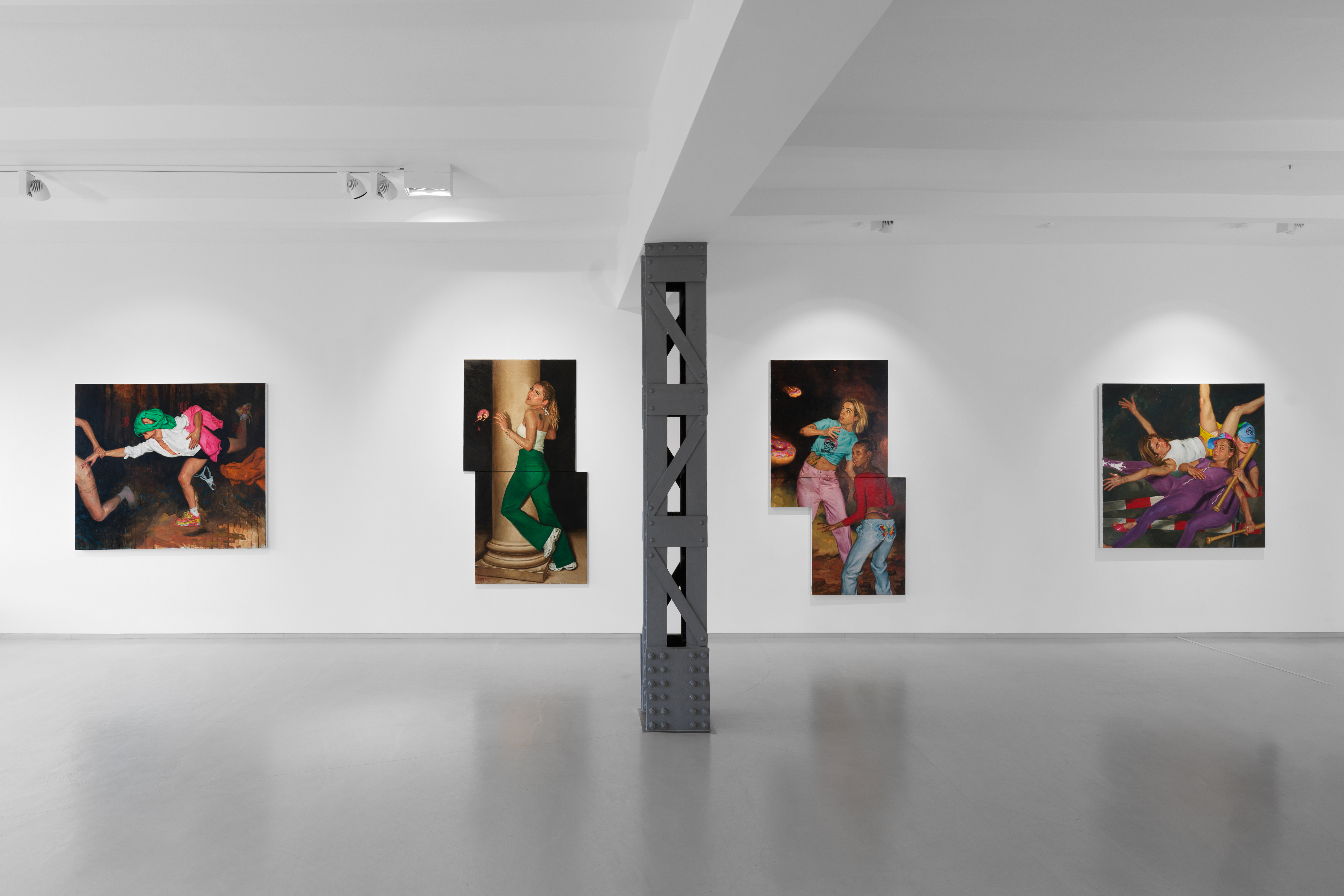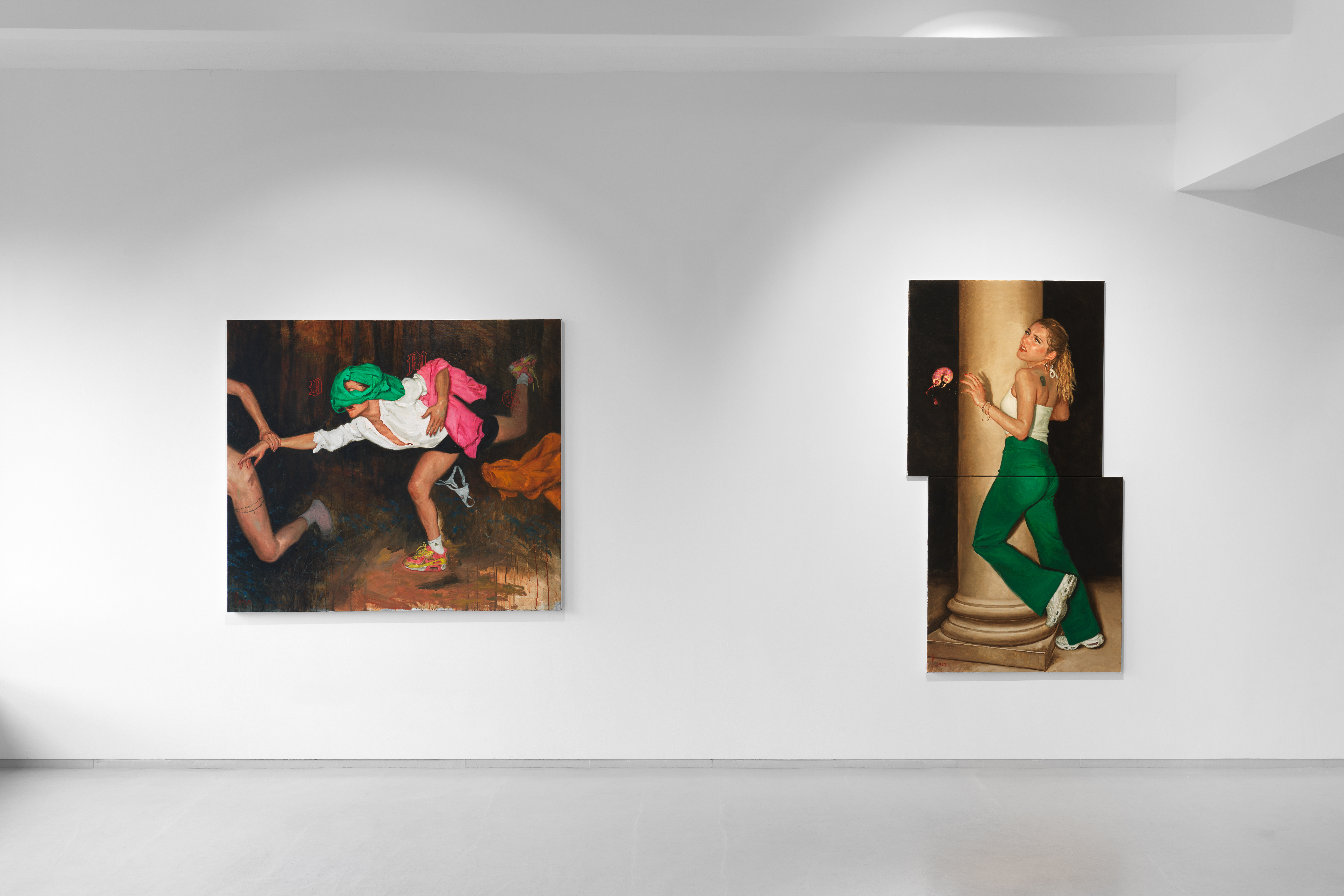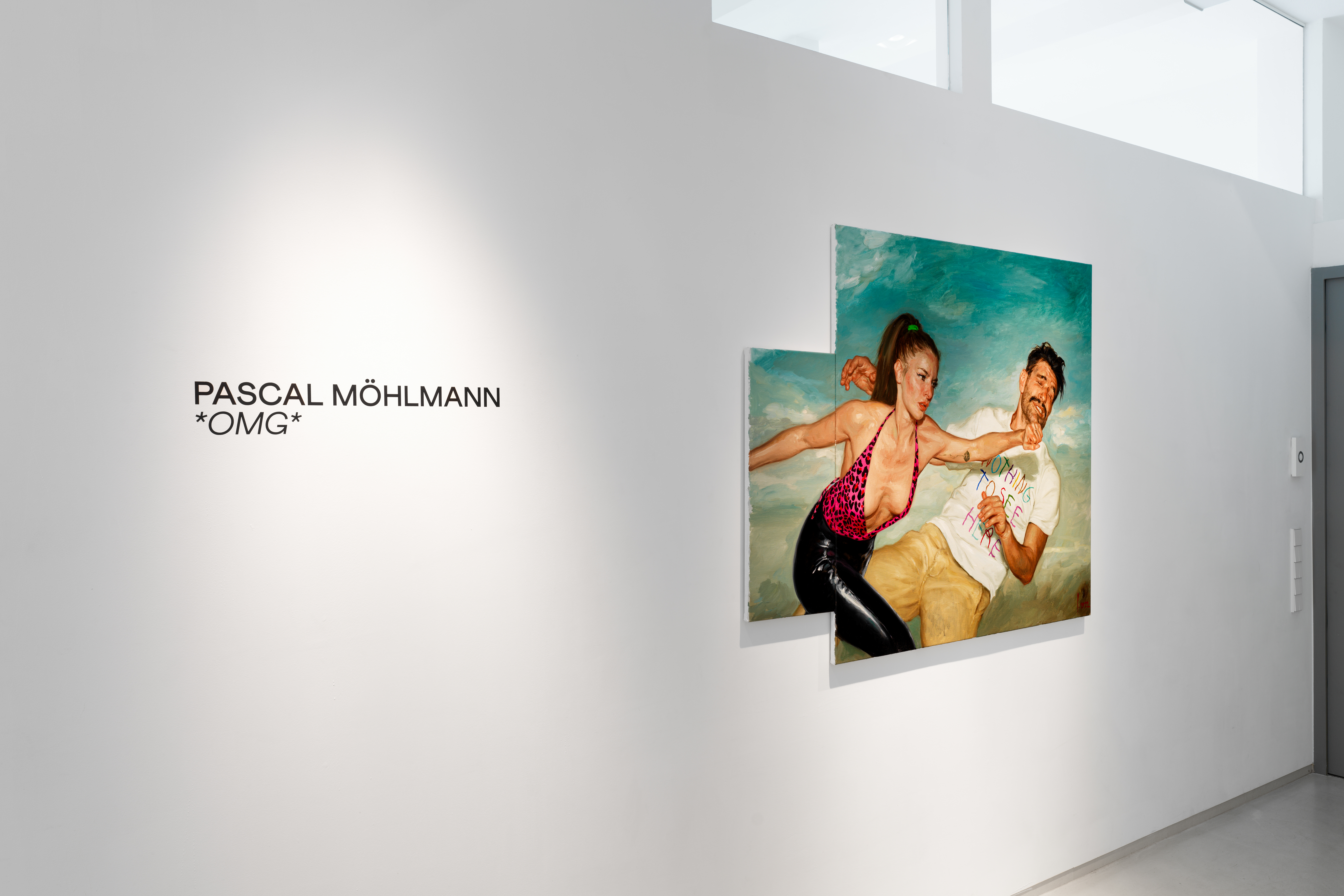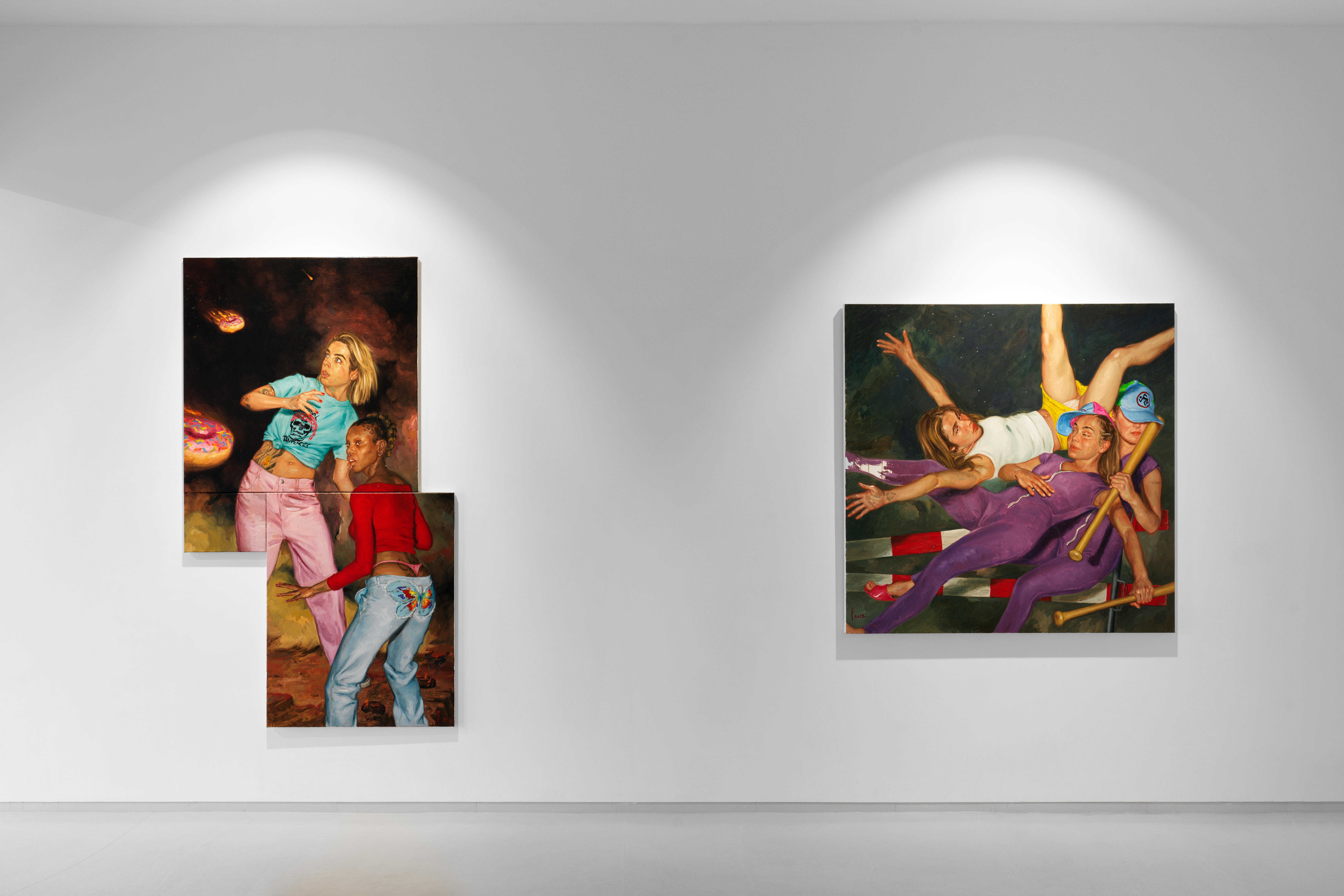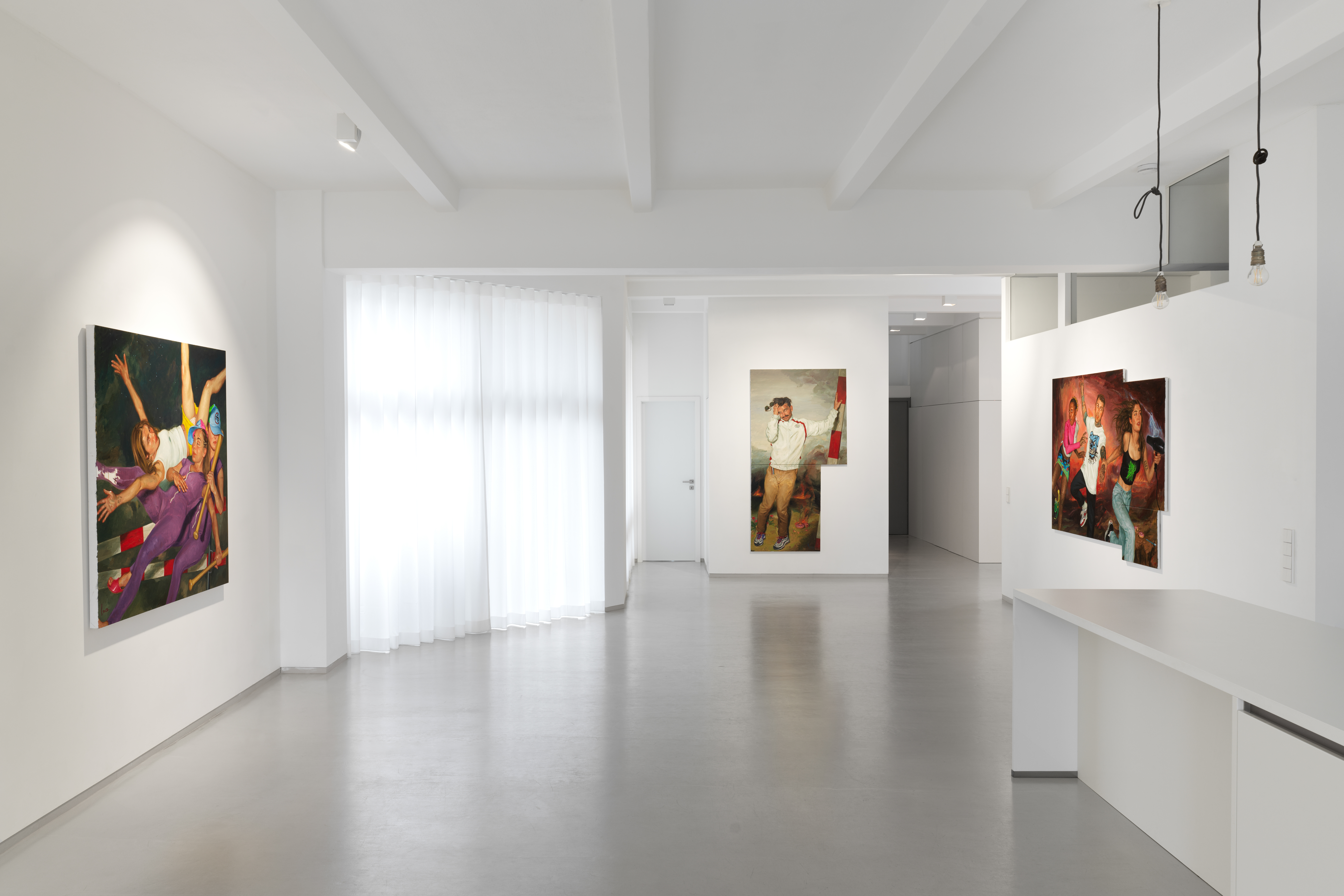PASCAL MOEHLMANN
IMAGES
INFO
Pascal Moehlmann
Standing spellbound in the Louvre in front of a painting that eclipsed anything the boy had seen before, Pascal Moehlmann realised his destiny. At 6.2m tall and 10m wide, the artwork consumed him, overwhelming his young mind, not only due to the sheer scale of the artwork with all its intricately painted details, but also because of the historical significance of the scene depicted. Jacques-Louis David painted it at the beginning of the 19th century, the painting shows the coronation of Napoleon I. "When I stood in front of the picture, I knew what I wanted," says Pascal Moehlmann today. »Don't become Napoleon, create illusions. Illusions in the form of images.«
In fact, it is his tact and craftsmanship that connects the Dutch artist to his historical role model David, and which most astonishes his audience today. The Swiss publisher and designer Wendelin Hess, one of Moehlmann's companions, once said »I don't know of any artist who paints in oil with such confidence and virtuosity and with just a few strokes like Pascal«.
The fact that Moehlmann relied on master craftsmanship at a time when a casual pose was often enough to identify art could easily be misunderstood as ambition. But Moehlmann's motivation for painting as elaborately as he does i takes a more pleasurable path. His unrestricted love is not for the finished work, but for the craft, where he sees himself following tradition of the important Flemish painters of the 17th century. If you ask Moehlmann about the meaning of his work, he says that he is basically concerned with just one thing: satisfying his »baroque mallust«. And this is how he comes to understand the classic sense of l'art pour l'art. One is completely moved by his activity. »For me there is nothing more beautiful than painting.«
The joy he finds through painting is perhaps the greatest enemy for the artist becomes evident when he complains about his habit of painting his pictures to death due to the sheer joy he finds in painting. It is the penchant for perfection that can easily take the soul of a picture, as the artist expresses what he now has under control through temporary self-training in what he calls speed painting. Today he combines both painting techniques and is so reserved that the picture only shows what is necessary.
Nevertheless, it can happen that he needs several hours for a single body part. »If I paint an arm, for example, I want to understand and feel the arm. I care about the process of creation. My painting should develop layer by layer. When I paint a character, I have the feeling that it is really being created – and not just its likeness." He doesn't want to go so far as to call it masturbation, "but it's an inner necessity.“
Standing spellbound in the Louvre in front of a painting that eclipsed anything the boy had seen before, Pascal Moehlmann realised his destiny. At 6.2m tall and 10m wide, the artwork consumed him, overwhelming his young mind, not only due to the sheer scale of the artwork with all its intricately painted details, but also because of the historical significance of the scene depicted. Jacques-Louis David painted it at the beginning of the 19th century, the painting shows the coronation of Napoleon I. "When I stood in front of the picture, I knew what I wanted," says Pascal Moehlmann today. »Don't become Napoleon, create illusions. Illusions in the form of images.«
In fact, it is his tact and craftsmanship that connects the Dutch artist to his historical role model David, and which most astonishes his audience today. The Swiss publisher and designer Wendelin Hess, one of Moehlmann's companions, once said »I don't know of any artist who paints in oil with such confidence and virtuosity and with just a few strokes like Pascal«.
The fact that Moehlmann relied on master craftsmanship at a time when a casual pose was often enough to identify art could easily be misunderstood as ambition. But Moehlmann's motivation for painting as elaborately as he does i takes a more pleasurable path. His unrestricted love is not for the finished work, but for the craft, where he sees himself following tradition of the important Flemish painters of the 17th century. If you ask Moehlmann about the meaning of his work, he says that he is basically concerned with just one thing: satisfying his »baroque mallust«. And this is how he comes to understand the classic sense of l'art pour l'art. One is completely moved by his activity. »For me there is nothing more beautiful than painting.«
The joy he finds through painting is perhaps the greatest enemy for the artist becomes evident when he complains about his habit of painting his pictures to death due to the sheer joy he finds in painting. It is the penchant for perfection that can easily take the soul of a picture, as the artist expresses what he now has under control through temporary self-training in what he calls speed painting. Today he combines both painting techniques and is so reserved that the picture only shows what is necessary.
Nevertheless, it can happen that he needs several hours for a single body part. »If I paint an arm, for example, I want to understand and feel the arm. I care about the process of creation. My painting should develop layer by layer. When I paint a character, I have the feeling that it is really being created – and not just its likeness." He doesn't want to go so far as to call it masturbation, "but it's an inner necessity.“
Success proves him right. He can be measured by the number of his prominent fans. Moehlmann portrayed Dieter Meier from Yello, Wimbledon winner Roger Federer and, even Swiss bishops like to be immortalized by the Zurich resident. Möhlmann also provided numerous motifs for the label of Virgil Abloh, one of the most influential fashion designers of recent years. In his Off-White Men's Fall/Winter 2020 collection, Abloh presented a number of garments printed with Möhlmann's collages of everyday objects. The connection between the two came about via Instagram, where Abloh fell in love with a portrait painted by Moehlmann of Caroline Vreeland - the great-granddaughter of Diana Vreeland, New York scene giant and editor-in-chief of American Vogue between 1963 and 1971 - who, as an influencer, had a nose for talent maintains. And of course Moehlmann also appreciates it.
Moehlmann studied at the art academy in Utrecht for six years, bored with the tangled conceptual art that young artists now regard as hip. "As if it were some dirty sex secret, I finally had to admit to myself: I love the old masters." At first his professors thought it was just another quirk he was trying to drive them crazy with. But Moehlmann studied Titian, Velázquez, van Dyck, nurturing a style based on the folds and incidence of light in order to develop what he calls his "own handwriting". "Only when you've really mastered your profession," says Moehlmann, "do you have enough time and attention to grasp the essence of the person portrayed: the soul."
But craftsmanship alone is not enough if you want to create art, it has to be paired with a unique style. With Moehlmann, he lives from a discrepancy that is sometimes known from director legend Terence Malik. What is for him the thin plot, which forms a contrast to the visual aesthetics, is for Moehlamnn the trivial subjects: group sex, donuts falling like meteorites from the sky, colorful sneakers, slap-stick scenes. All in front of dystopian-looking backgrounds.
His figures, which Moehlmann mostly discovered from within his circle of acquaintances or quite simply on the street, and according to the tableau vivant tradition, artistically arranges in his studio as a template for painting, seem like those looking for the meaning of life, bored by prosperity and success. And with their conformity striving for non-conformity, despite the old-masterly way in which they are painted, they cannot be prescribed in any other epoch than the present.
You reflect the central conflict of our time: You recognize the need for something to change, but comfort and individual freedom still seem more desirable.
Moehlmann studied at the art academy in Utrecht for six years, bored with the tangled conceptual art that young artists now regard as hip. "As if it were some dirty sex secret, I finally had to admit to myself: I love the old masters." At first his professors thought it was just another quirk he was trying to drive them crazy with. But Moehlmann studied Titian, Velázquez, van Dyck, nurturing a style based on the folds and incidence of light in order to develop what he calls his "own handwriting". "Only when you've really mastered your profession," says Moehlmann, "do you have enough time and attention to grasp the essence of the person portrayed: the soul."
But craftsmanship alone is not enough if you want to create art, it has to be paired with a unique style. With Moehlmann, he lives from a discrepancy that is sometimes known from director legend Terence Malik. What is for him the thin plot, which forms a contrast to the visual aesthetics, is for Moehlamnn the trivial subjects: group sex, donuts falling like meteorites from the sky, colorful sneakers, slap-stick scenes. All in front of dystopian-looking backgrounds.
His figures, which Moehlmann mostly discovered from within his circle of acquaintances or quite simply on the street, and according to the tableau vivant tradition, artistically arranges in his studio as a template for painting, seem like those looking for the meaning of life, bored by prosperity and success. And with their conformity striving for non-conformity, despite the old-masterly way in which they are painted, they cannot be prescribed in any other epoch than the present.
You reflect the central conflict of our time: You recognize the need for something to change, but comfort and individual freedom still seem more desirable.

